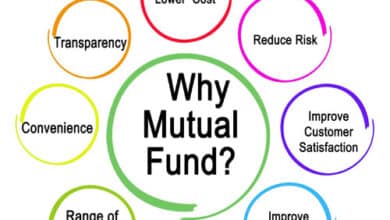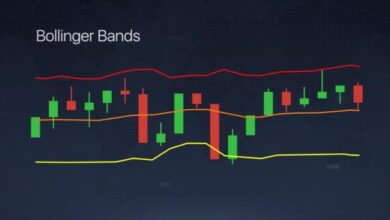What is Sensex? And how the Sensex is formed

Sensex 2022: Hello Friends, whenever you have heard about the share market, then a word in front of you is Sensex, it must have been used too. If after listening to Sensex, this question has come in your mind what is this Sensex and what is its use, then friends tell you that before investing in the share market, Sensex Kya Hota Hai and how Sensex is formed To know about it Very important.
Because by looking at it, you get to know the advantages and disadvantages of investing, if you invest by looking at the Sensex, then you will definitely make profit. It shows by how many points the stock market has increased and decreased.
Friends, many questions will be going on in your mind regarding Sensex that what is Sensex (Sensex Kya Hota Hai) , meaning of Sensex and how Sensex decreases or increases, then friends are your friends. We will answer the questions in this post, our post is based on Sensex.
So let us now know what is Sensex (Sensex Kya Hota Hai) and what is the meaning of Sensex.
What is Sensex?
Sensex refers to the benchmark index of BSE in India. It was launched on 1 January 1986 and is the oldest index in India. It is an investable index used to track the performance of India’s 30 largest and most financially sound companies.
In simple language, the index of BSE is called Sensex.
BSE is known as the Bombay Stock Exchange and represents some of the largest and most important sectors of the Indian economy. Sensex includes the top 30 companies in India that have the highest free-float capitalization in the market. is.
Sensex index is used to track the same 30 companies, apart from this many indexes are also included like S&P Small Cap Index, S&P Mid Cap Index. Top companies are also included in these indexes, their performance is revealed by watching them live.
Sensex is calculated in Indian Rupee (INR). The full market cap index of the Sensex as of August 31, 2021 is 255.003 trillion rupees which is US $ 3.4 trillion. Sensex is the oldest stock market index in India which was launched in 1986.
The growth of the Indian economy has changed the shape of the functioning of the Sensex. When it was first launched, it was calculated on the basis of market cap. but was changed to a free-float capitalization method in September 2003.
By looking at the Sensex, we can know the condition of the stock market, if the Sensex is in the green and is rising, then the stock is increasing and the market is positive but if the index is falling towards the bottom with red then The share price is declining and the market is negative.
Meaning of Sensex
The word ‘Sensex’ is a combination of the words ‘sensitive’ and ‘index’. It was brought up by stock market expert Deepak Mohini. Sensex reflects the volatility in the Indian stock market. It is considered as the benchmark index of the Indian stock market. This is the oldest index in India and provides time series data since 1979.
The index reflects the market sentiment and also acts as a benchmark for fund managers to compare the performance of their funds. For investors, the Sensex acts as a proxy for the Indian stock markets.
By looking at the Sensex, you can check your returns. According to the percentage by which the Sensex has increased, you get to know the increase and decrease in your return.
On what basis are the 30 companies selected?
Companies that are included in the Sensex are selected by the S&P BSE Index Committee on the basis of several criteria.
- The company should be listed on BSE in India in which the shares of that company are listed on Bombay Stock Exchange for more than 1 year.
- They should be a large-to-mega-cap company
- On all the days the stock market is open in the last one year, it is necessary to buy and sell the shares of that company.
- Average of trades per day In terms of numbers and value, that company must certainly be one of the largest 150 companies in the country.
- The stock of that company should be relatively liquid.
- Companies should be given their due. Earnings from the core business should continue to increase the value of the company’s shares.
- They should keep the sector broadly balanced in line with the Indian equity market.
BSE Sensex Information(BSE Sensex Complete Information)
BSE Sensex (also known as S&P Bombay Stock Exchange Sensitive Index or simply SENSEX) Listed on Bombay Stock Exchange is 30 well established and economically A free-float stock market index of strong companies.
This index of BSE includes 30 companies, which tells the movement of the share market, if there is more investment in these companies, then the share price of the company increases, but due to some reason there is a decrease in the investment in the company, then its share of the stock. The price starts falling, due to which the BSE Sensex also decreases and increases.
What is Sensex and Nifty stock market?
Sensex shows the ups and downs in the Indian stock market. If the Sensex rises, it means that the prices of 30 stocks have gone up. Similarly, if there is a fall in the Sensex, it means that the prices of 30 stocks in the index have come down. Sensex is the oldest index of India and people also consider it a reflection of Indian economy because the companies involved in it contribute 37% to India’s economy.
Actually, Sensex was earlier calculated on the basis of full market capitalization, but it was shifted to free-float market capitalization from September 1, 2003.
All the major index providers like MSCI, FTSE, STOXX, S&P and Dow Jones use the same free-float methodology.
Like Sensex, Nifty is also an index. It stands for National Stock Exchange (NSE). The same name Nifty comes from the combination of National and Fifty.
NIFTY 50 is also a benchmark index, and includes the top 50 companies traded on the National Stock Exchange. The top 50 stocks are selected from 12 different sectors including Information Technology, Financial Services, Consumer Goods, Telecommunication, Automobiles etc.
The same difference between Sensex and Nifty If seen, then Sensex and Nifty are the benchmarks of broad market index and equity market. Both of these represent the entire stock market, and therefore any change in the index of these two affects the entire market.
The only difference between the two is that Sensex consists of stocks of 30 companies whereas Nifty consists of stocks of 50 companies.
If the Sensex is lower higher, and the top companies in the bullish market push the index value higher. In contrast Nifty is broad as it has 50 companies in its index. Therefore, in a bull market, the increase in the value of Nifty is less than that of the Sensex. Sensex and Nifty are independent indexes.
Friends till now we have to know what is Sensex and how it works but now we will know how Sensex is formed and how Sensex decreases or increases.
How is Sensex formed?
We are well aware that Sensex which is also known as S&P Bombay Stock Exchange, Sensitive Index or simply Sensex. is a free-float stock market index of 30 well-established and financially sound companies listed on the Bombay Stock Exchange. Although more than 6000 companies are listed in Bombay Stock Exchange.
When the Sensex is calculated, there are only 30 companies in it, which are top in the market. Some basic criteria have been set while choosing the shares of these 30 companies.
- Stocks should be traded on every trading day (the day the stock market operates) for a year.
- To be in the list of 30 companies, that company must first have one Must be one of the top 150 companies listed per day in a year. The same is listed by the average number of trades (buying or selling of shares) and the average price of trades (in real rupee terms).
- Also the stock has been listed on BSE for at least one year. But it is mandatory to list.
The selection of 30 companies in the Sensex is done by the Index Committee of the stock exchange, this committee consists of many sections of people, which may mainly include government, banks and eminent economists.
How does the Sensex increase or decrease?
As we know that by looking at the Sensex, we come to know Share Market how is the solution of the market Sensex is it down or up.
When we invest more in the stock of a company listed in the index, then the Sensex rises upwards and when there is work investment in the stock of a company, then the Sensex rolls down which is also called the Sensex event.
There is a daily fluctuation in the Sensex, but it is a matter of concern when the Sensex falls by many points, in such a situation, everyone starts selling their shares from the stock market, while they have a loss in it.
Whenever a company launches any of its products, people invest a lot in it, due to which the share price of that company starts increasing and people get a lot of profit. Similarly, if the product launched by that company fails or the company suffers, then people start selling the shares of that company, due to which the company’s share prices fall.
The falling stock of the company also causes a fall in the Sensex due to the price. Similarly, the Sensex rises and falls.
Friends, now we will know what are the benefits of Sensex.
Advantages of Sensex(Advantages of Sensex)
If seen, the biggest advantage of Sensex is that it allows investors to know and understand the future changes in the market and invest their money in the right way according to them. However, apart from this, it also has many advantages such as –
#1. Higher Returns
By looking at Sensex, we can invest in a well-performing company, from which we also know how much return this company has given in the past and how much return it can give in the future. If we invest in such company then it can give more returns in future and more investors invest in such companies so that that company increases its business in future.
#2. Economy Development
When the Sensex rises continuously, then foreign investors start investing in the country, it is invested in Indian companies and this increases the price of the Indian rupee, due to which the rupee is strong against foreign currency and we get cheap things from abroad. Meets. From this also the economy develops and gradually the economy starts growing
#3. Provide Company Performance Reports/Provide Companies Performance Reports
Through Sensex, you get to know the company’s performance report, which company has performed and how much return it has given in the last few years and how much its share price has increased.
Which are the Top 30 Best Performing Companies
The Sensex was formed in 1986 and only after that the top 30 companies were included in the index for the first time. This included only those 30 companies, which were very strong financially and also very large in terms of market cap, so the demand for shares of these companies was very high, everyone wanted to invest in these companies.
These companies are also called as blue chip companies, today BSE index consists of 31 companies and all these companies belong to different industries, we have shared below list of 31 companies listed in Bombay Stock Exchange.
- Adani Ports and Special Economic Zone Ltd.
- Asian Paints
- Axis Bank Ltd.
- Bajaj Auto Ltd.
- Bharti Airtel Ltd.
- Cipla
- Coal India Ltd.
- Dr. Reddys Laboratories Ltd.
- HDFC Bank Ltd
- Hero MotoCorp Ltd.
- Hindustan Unilever Ltd.
- Housing Development Finance Corporation Ltd.< /li>
- ICICI Bank Ltd.
- ITC
- Infosys Ltd.
- Kotak Mahindra Bank Ltd.
- Larsen & Toubro Ltd.
- Lupin
- Mahindra & Mahindra Ltd.
- Maruti Suzuki India Ltd.
- NTPC Ltd.
- Oil & Natural Gas Corporation Ltd.
- Power Grid Corporation Of India Ltd.
- Reliance Industries Ltd.
- State Bank Of India
- Sun Pharmaceutical Industries Ltd.
- Tata Consultancy Services Ltd.
- Tata Motors
- Tata Motors – DVR Ordinary
- Tata Steel Ltd.
- Wipro Ltd.
In today’s time these companies rule the Indian market. All these companies are prominent in their respective fields and each company also represents the companies of its sector in the Sensex.
What is the oldest stock market index in the country?
The oldest stock market index in the country is the Sensex. It was created in 1986 and is operated by Standard & Poor’s (S&P).
Read Also:
What Is Short Selling? How to earn money by short selling?
What Is Stock Broker and What does a stock broker do?
conclusion
Friends, you should always invest in the stock market only after taking care because here if you invest in any company in which there is a constant loss, then its share price starts decreasing and your invested money gets lost. But if you invest in a company that performs well after watching the Sensex, then your invested money can increase.
So before investing, always look at the Sensex and invest only in the company that performs well.
So friends, as soon as you hope, what is Sensex(Sensex Kya Hota Hai) and how it is made, you must have understood the complete information about it, if you liked this information then your friends and relatives like this Do share it with.




